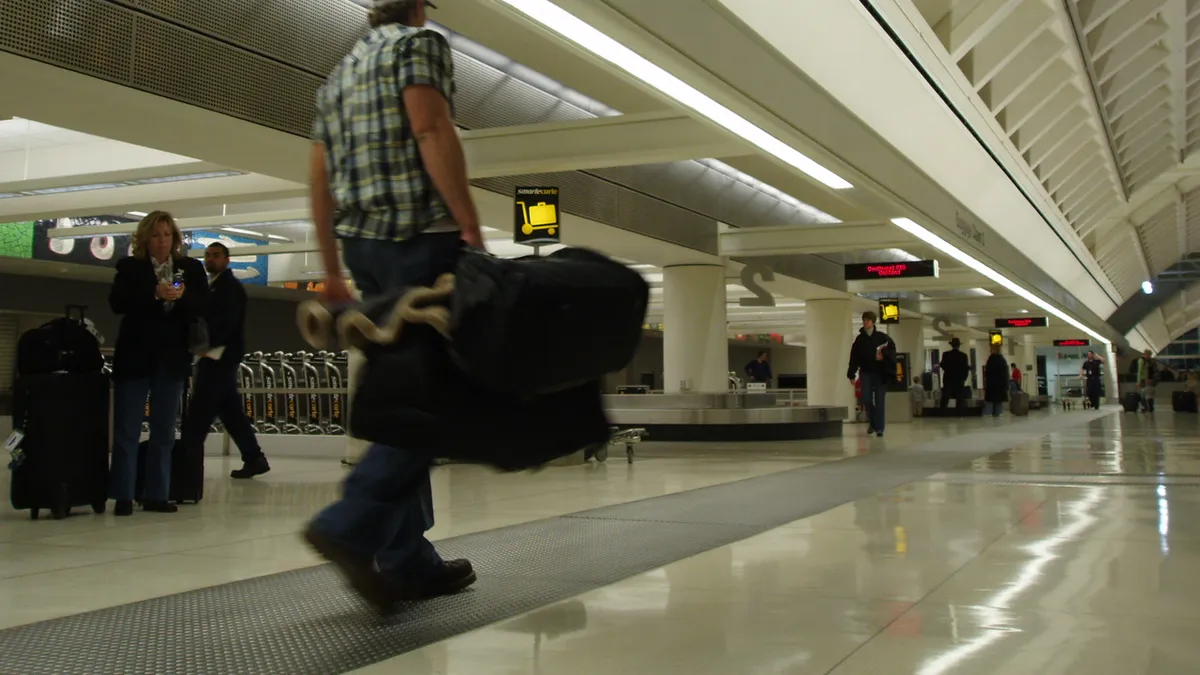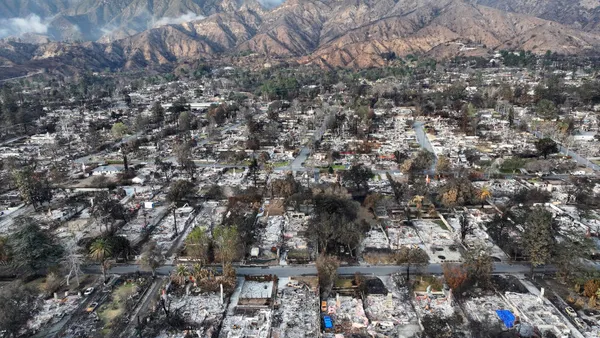Dive Brief:
- The Mineta San Jose International Airport (SJC) announced a partnership with U.S. Customs and Border Protection (CBP) to use facial recognition technology to process arriving international travelers, the first airport on the west coast to do so.
- The airport began using facial recognition tech as part of an enhanced entry process on June 25, and plans to implement biometrics for all departing travelers at seven gates this fall. The airport has committed to processing all arriving and departing international travelers with facial biometrics in the coming years.
- "The use of biometrics technology will help cut down wait times and enhance the overall experience for our international travelers, especially as we continue to see unprecedented growth at SJC," San Jose Mayor Sam Liccardo said in a statement.
Dive Insight:
SJC saw international arrivals more than double from 199,900 in 2015 to 438,800 in 2017, according to airport officials. Facial biometrics is one of several initiatives launched to meet growing efficiency needs and comply with CBP programs such as the Global Entry and Mobile Passport Control, which have expedited international passenger arrival times at SJC.
Multi-million dollar people-mover systems at Los Angeles International Airport and Phoenix Sky Harbor launched and extended earlier this year suggest new technology to maximize efficiency is a primary consideration for large airports around the country. When dealing with cutting edge tech for a diverse populace, policymakers and airport administrators must tread lightly to avoid discriminatory practices. Earlier this year, a report by the CAPA-Centre for Aviation found facial recognition technology is “still very much under trail.” The research highlighted facial recognition obstacles related to the viewing angle of the face and identifying ethnic minorities.
That said, on June 26, Microsoft announced in a company blog post that its facial recognition software is now more accurate in identifying people of color. The company touts that error rates for men and women with darker skin has been reduced by up to 20 times. The problem initially arose because facial recognition systems were proven to be more accurate with white men since the sets of facial images they trained on were predominately white men.
According to a report by KTVU, SJC’s facial recognition program has seen a match success rate of 99% after half a million tests. Additionally, federal officials estimate the average wait time for arriving international passengers at SJC has decreased by roughly four minutes per passenger.
In general, confidence is mounting in facial recognition technology. Biometrics have been used more and more by the Department of Homeland Security (DHS) and earlier this year Amazon offered facial recognition tech to police. Also, technology companies AnyVision and NVIDIA partnered to develop surveillance cameras with facial recognition tech.










